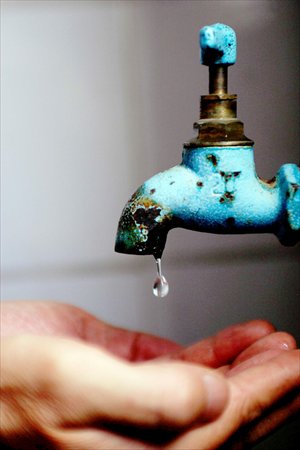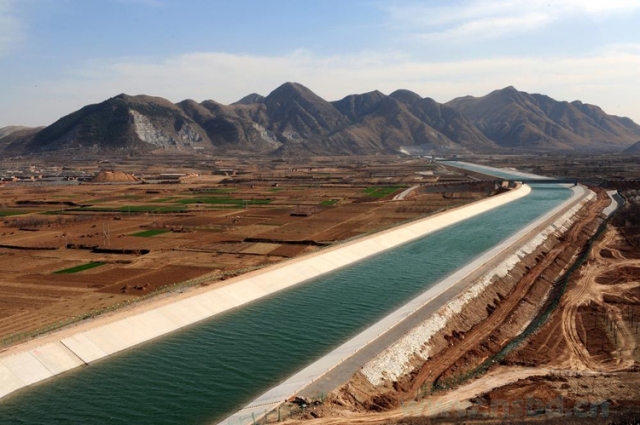 In my last post I suggested that we give two cheers for smog, since Beijing’s foul air may actually be compelling the government to implement more stringent emission controls than it had previously been willing to contemplate. We could also hope, following this logic, that the severe water shortage facing Beijing might also compel the government to implement a more drastic water conservation program. How about a campaign to fix leaking taps? Leaky taps account for water losses of somewhere around 100 million cubic meters annually.
In my last post I suggested that we give two cheers for smog, since Beijing’s foul air may actually be compelling the government to implement more stringent emission controls than it had previously been willing to contemplate. We could also hope, following this logic, that the severe water shortage facing Beijing might also compel the government to implement a more drastic water conservation program. How about a campaign to fix leaking taps? Leaky taps account for water losses of somewhere around 100 million cubic meters annually.
Instead, however, the government is much more enamored of Big Solutions to address the problem. This shouldn’t surprise us really; Big Solutions have always been on the agenda when China faces development challenges: Three Gorges Dam, Great Leap Forward, Great Wall… Big Solutions all of them. The latest of course is the South to North Water Transfer Project which, when complete, is projected to provide Beijing with an additional one billion cubic meters of water per year.

Photo: Bo Song, The Middle Route Project Construction Authority, from http://www1.american.edu/ted/ICE/north-china.html
But that promised infusion of southern water will still not fill the gap between the city’s annual consumption and locally available resources. As noted in a recent article by Luna Lin on ChinaDiaologue,
Beijing’s annual water consumption has reached 3.6 billion cubic metres, according to statistics released by the Beijing Water Authority, far more than the 2.1 billion cubic metres locally available. The per capita annual water availability is now around 120 cubic metres, well below the United Nations absolute water scarcity threshold and puts China’s capital city in a position of more severe water scarcity than some countries in the arid Middle-East.
Obviously, fixing the leaky taps comes nowhere close to closing the gap between consumption and (sustainable) supply either. Another Big Solution is desalinization, which is already underway, but this barely puts a dent in the problem either. For Xu Xinyi, director of the Beijing Normal University’s College of Water Sciences, it’s more a problem of population: Beijing’s water resources can support a city of roughly 12 million, and yet the population has swelled to over 20 million, and current urban planning tends to assume that southern water transfer will work, reducing further the incentive to curb urban growth.
So, there’s not much point in giving two cheers for water shortage. And while fixing the taps isn’t going to solve the problem, it’s at least a step in the direction of thinking small, not big. For the writer Yu Hua, China is a country still in the throws of revolution, with Big Solutions being one continuing manifestation of the violent transformations that have shaped modern China. Big Solutions also generate revenue, yield measurable changes, and advance careers. Conserving water – fixing the taps – does none of these things.

Pingback: The fake Olympics redux | geography3822